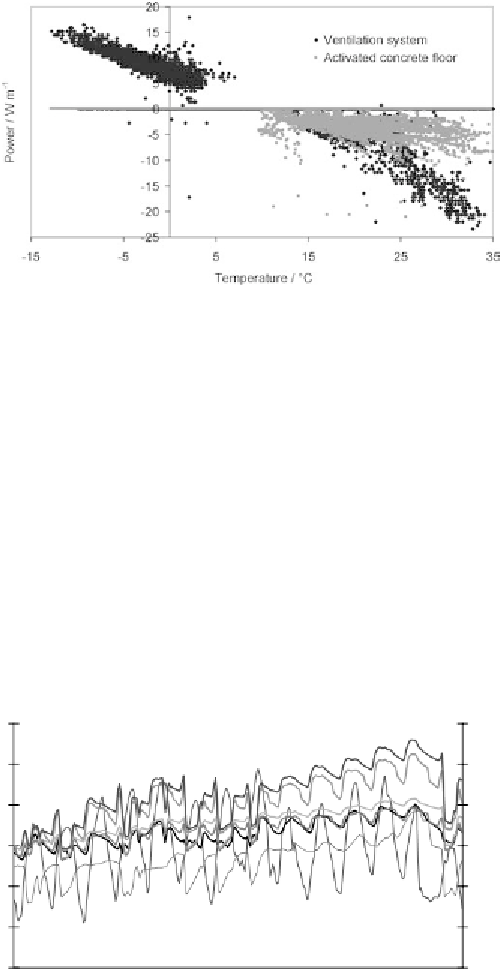Environmental Engineering Reference
In-Depth Information
Figure 4.19
Heat transfer of the geothermal vertical heat exchanger as a function of outside temperature
for the first six months of 2005
The thermal power dissipated by the heat exchangers is rather low, with a max-
imum of about 25W per metre when the ventilation system is operating. Also,
during the winter months with ambient temperatures below
10
◦
C the power ex-
tracted was less than 20W per metre (see Figure 4.19). If the floor cooling sys-
tem is used, the high pressure drop reduces the volume flow rates by a factor of
5 approximately. Thermal power dissipated by the earth heat exchangers drops to
5-10Wm
−
1
. Two factors account for the reduced power: the temperature differ-
ence between the floor cooling system and the soil is smaller than for the ventila-
tion system with ambient air temperatures up to 35
◦
C. Furthermore, the heat transfer
area between the floor and room air is rather low at 157m
2
. At about 20Wm
−
2
cooling power, only 3 kW cooling load can be taken up by the activated floor. The
−
40
30
000
70% shading/
no night vent.
No shading/
0.6 h
-1
night vent.
35
25
000
No shading/
no night vent.
30
20
000
Measured room temp.
25
15
000
70% shading/
0.6 h
-1
night vent.
20
10
000
Supply air
Ambient air
15
5
000
Volume flow
10
0
17
18
19
20
21
22
23
24
25
26
27
28
30
Date in June 2005
Figure 4.20
Measured and simulated room temperatures during a hot fortnight in summer 2005 with
geothermal cooling of the supply air only







Search WWH ::

Custom Search